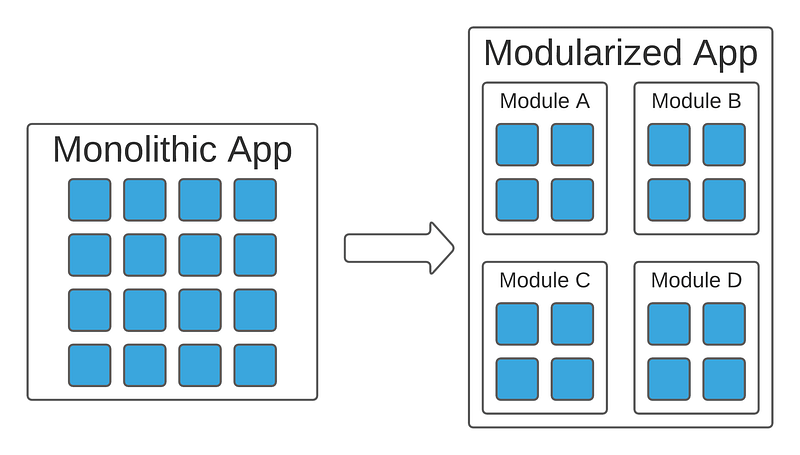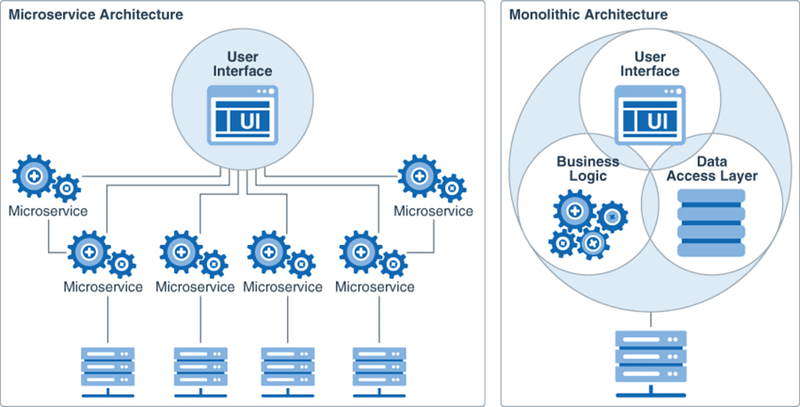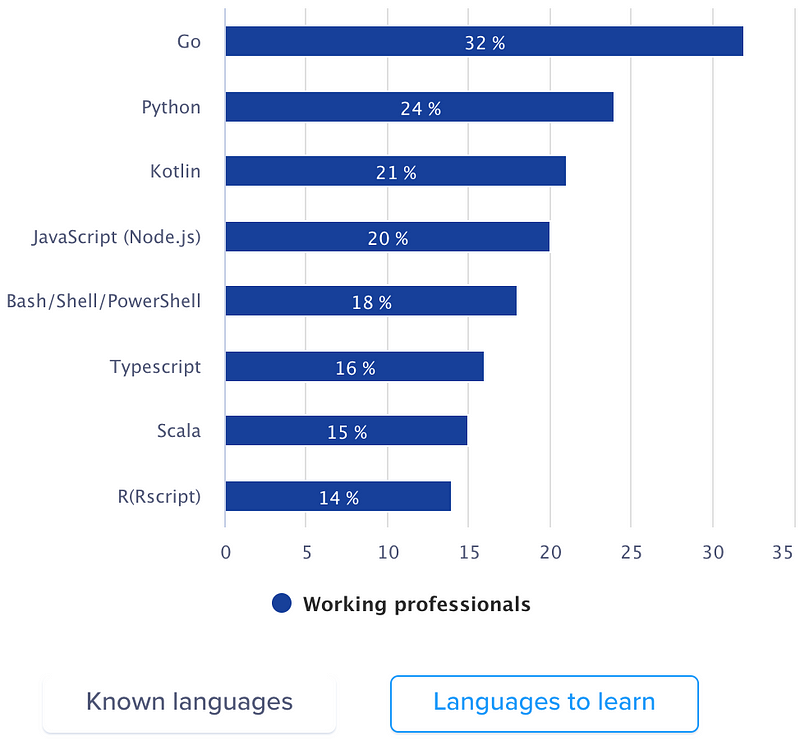Exploring Microservices and the Rise of Go Programming
Written on
Chapter 1: The Evolution of Software Architecture
The landscape of software development is rapidly changing, with two technologies gaining significant traction: microservices and the Go programming language.

Go is emerging as a leading programming language, particularly in 2021. Designed by Google with a focus on concurrency, Go excels in building large-scale distributed systems that prioritize communication and efficiency. A common joke in the tech community suggests that Go was conceived by engineers waiting for their other projects to compile.
Simultaneously, microservices are becoming a preferred software architecture due to their scalable nature. A recent report indicates that approximately 85% of senior engineers and managers believe microservices will dominate backend development and complex system designs. In this article, we will delve into the fundamentals of microservices, the rationale behind their adoption, and the reasons behind Go's rising popularity as a development language.
Section 1.1: The Demand for Scalability
To understand the shift towards microservices, we must first look back at the history of computing. Initially, software applications were executed entirely on local machines. Adding new features or updates required modifications to a single codebase, leading to cumbersome monolithic architectures that were challenging to maintain, even with rigorous testing.
In response, engineers began breaking down these extensive codebases into modular components.

The idea was to create reusable modules for various applications. However, even with modularization, the final executable often remained a collection of tightly integrated components. The advent of web applications allowed for hosting on servers rather than client machines, alleviating some issues related to client-side variability. Nevertheless, applications grew increasingly complex, as evidenced by platforms like Google, Amazon, and Uber. A sudden surge in traffic could easily overwhelm these systems, resulting in crashes. Although advancements like elastic data stores have emerged to manage traffic spikes, monolithic applications still struggle with resource inefficiency and connection management.
Section 1.2: Introducing Microservices
Microservices offer a solution by advocating for a decentralized approach. Rather than relying on a single codebase, they encourage the application of S.O.L.I.D principles, allowing developers to create independent services at scale. Microservices align closely with Robert C. Martin's "single responsibility principle," which emphasizes grouping elements that change for similar reasons and separating those that change for different reasons.
In contrast to a monolithic architecture, a microservices framework can utilize a unified UI while dispersing functionality across various independent services—each handling specific tasks like payments or user authentication. Each microservice can maintain its own data store, ensuring that the failure of one does not compromise the entire system.

As organizations scale their microservices architecture, certain principles should be upheld:
- Standardized: Interactions between microservices should be consistent and according to design specifications.
- Abstraction: Concealing internal logic will foster independent services that communicate through standardized interfaces.
- Loosely Coupled: Microservices should operate independently, minimizing interdependencies.
- Reusable: Services should easily scale based on varying data demands, creating a flexible architecture.
- Independent: Each service must manage its own business logic autonomously.
- Stateless: Services should not retain information from previous requests.
- Discoverable: Services must be able to identify each other dynamically at scale.
- Composable: The ability to combine multiple microservices to form adaptable applications is essential.
Microservices do not adhere to strict rules; they represent a strategic approach to building efficient, scalable, and resilient architectures.
Chapter 2: Why Go is the Ideal Choice for Microservices
Go has established itself as a leading language for developing microservices. Its simplicity and ease of learning make it accessible. Designed with concurrency in mind, Go can handle over 1,000 concurrent requests per second by effectively utilizing multiple cores, giving it a significant advantage over languages like Python. Moreover, Go boasts a comprehensive standard library tailored for web services.
As a statically typed and compiled language, Go enables developers to write performant code suitable for large-scale applications. It includes robust testing capabilities, essential for creating maintainable and extendable microservices.
Go's architectural design naturally aligns with microservice principles, promoting independent components that deliver specific business functionalities. The compact size of compiled Go binaries also complements the microservice paradigm.
Additionally, Go maintains simplicity, fostering event-driven programming without the complexities introduced by inheritance, callbacks, or promises. This clarity allows for well-defined service responsibilities without unnecessary coupling.
Furthermore, Go combines the best features of other programming languages: high compilation speed akin to C/C++, efficient concurrency comparable to Java, and clear syntax reminiscent of Python. While it has its drawbacks, its strengths make it an excellent fit for microservice architectures.
A survey by HackerEarth Insights revealed that over 16,000 developers identified Go as the most desirable language to learn in 2020. This growing interest in both Go and microservices highlights their parallel rise in the tech landscape.

In summary, this article provided a high-level overview of the increasing popularity of microservices and the choice of Go for their development. I hope it has offered valuable insights and inspired you to explore microservices further in your software design endeavors. Should you have any questions or wish for clarification on any aspect, please feel free to leave a comment below. Thank you for reading!
The first video titled "What are Microservices?" provides an overview of the microservices architecture and its benefits, making it an essential watch for anyone interested in this topic.
The second video titled "What is a #microservice?" delves into the core concepts of microservices, explaining their significance in modern software development.